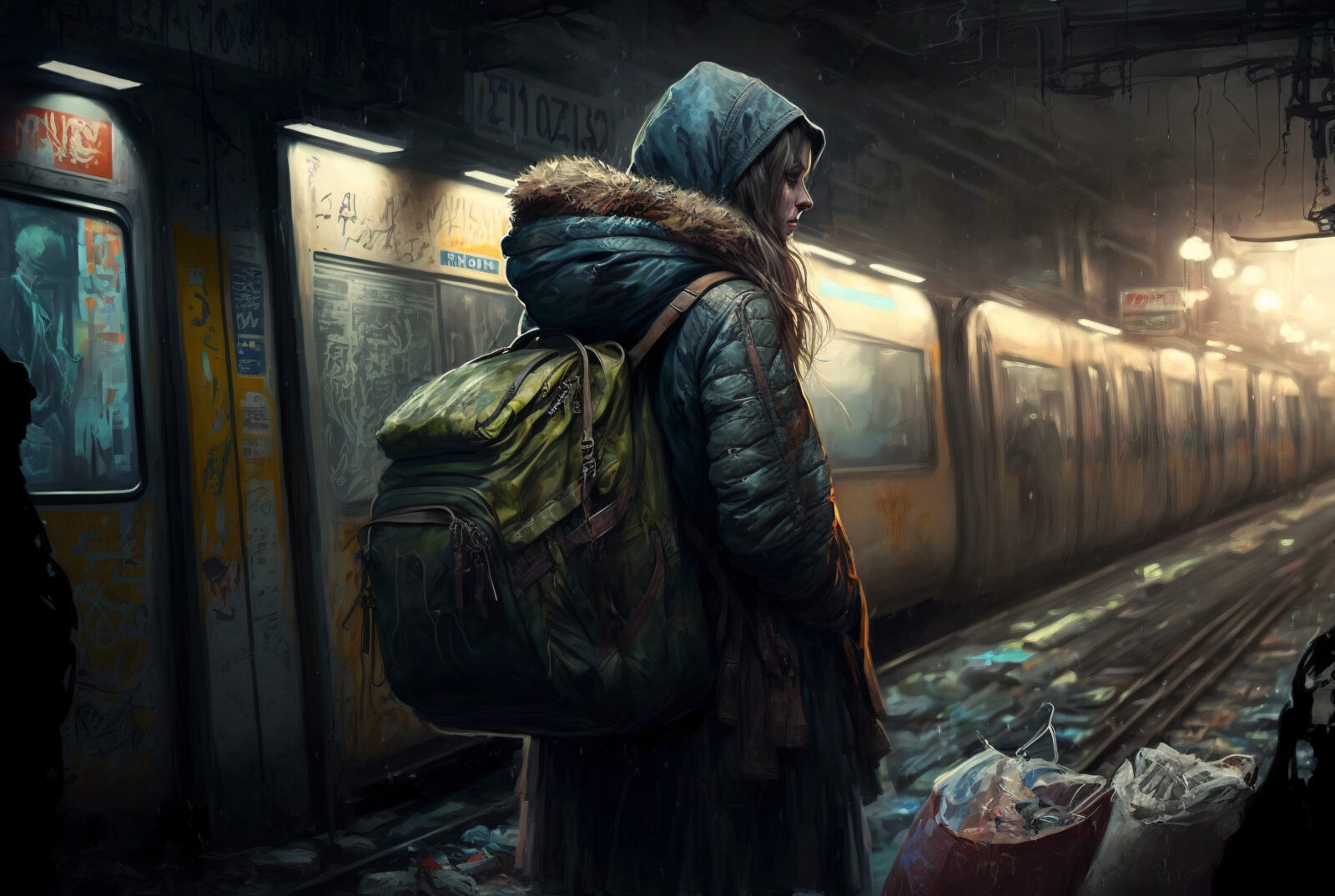I finished last week my eight-part series on living in Springfield, Missouri’s Eden Village for the long-term homeless. My goal in staying there and elsewhere: get some street-level knowledge of individuals, instead of sticking with the suite-level perspective that’s most common in writing about homelessness. But I don’t want to suggest that no one else does good reporting rather than pontificating. Here are brief reviews of two books from the 1990s worth reading: one that mirrors reality, and the other with good specific detail but an overall romanticism.
Steven VanderStaay’s Street Lives (New Society, 1992) shows how he learned valuable lessons while hanging around: “It was hard going at first. The interviews were awkward, stilted. Then… I learned to listen for the story, and not the answer. Gradually, homeless people I had spoken with began to refer me to their friends and to direct me to the stories they thought I should hear.”
VanderStaay listened and transcribed numerous explanations of behavior a third of a century ago similar to what I hear today. We may have talked with some of the same people, his on the front end of a life of squalor when it seemed like fun, mine when they’re disgruntled with the dregs. He quoted one teen saying, “The only good times are when you’re on drugs, trippin’ on acid and drinkin’ at a keg. It’s fun then ‘cause we’re free of all our problems… like you can just flip out for the rest of your life.” (People on the back end often say, “I’ve wasted my life.”)
Street Lives alerts us to the thoughtlessness of planners who aren’t streetwise in what they produce: “Many communities work hard to shelter the poor and feed the hungry, but few provide enough toilets. This forces any homeless people to plan their entire day around the availability of a restroom. Facilities for washing clothes and showering are even more difficult to find. Ironically, these very issues, sources of great degradation for homeless people, generate the greatest antipathy toward them among those of us with homes.”
Street Lives also shows how homeless people a third of a century ago, like many now, see that “government and charitable funds earmarked for the poor and homeless rarely reach them, that caseworkers become adversaries, not advocates, and that job-training programs too often provide jobs for the trainers, not the trainees.” Many homeless people then and now are profoundly alone, so “solutions that build communities give meaning to people who suffer in isolation, creating contexts in which other difficulties can be overcome.”
As Vanderstaay was writing, Gwendolyn Dordick was doing research for a Ph.D. sociology dissertation that she turned into Something Left to Lose (Temple University, 1997). During fifteen months in 1990 and 1991 she hung out with four groups of homeless New Yorkers: Some lived in the huge west side bus station, some in a shanty town on the east side, some in a large public shelter at the northern tip of Manhattan, and some in a church shelter.
Each place came with tradeoffs. Station and shanty offered freedom but no material security. The public shelter yielded food and a bed, “three hots and a cot,” but also danger. Dordick contrasted the “unpredictability of the Station, the squalor of the Shanty, and the danger” of the public shelter with life in the church shelter. There, the inhabitants were “safe and well fed,” but they needed to work, get their GEDs, attend Alcoholics Anonymous meeting, or so forth.
Dordick’s romanticism shows in her complaints that at the church shelter “the men live in a fishbowl, their progress monitored constantly in the logbook by well-meaning volunteers who want their clients to be more like them.” Ugh: sober, self-controlled, bourgeois. She “came to understand [the church shelter] best in terms of what it lacked”: the whiff of danger in the other places, including “the menacing arrogance” of a man she called Muscles.
So I’m impressed with Dordick’s diligence, and her book title’s play on lines from Kris Kristofferson’s song, “Me and Bobby Magee.” Kristofferson composed the song’s key while thinking of a scene from the Italian film La Strada. In it, Anthony Quinn learns that a little girl he cared for had died: He gets drunk and, on a beach, howls at the stars. Kristofferson later spoke of “the two-edged sword that freedom is. [The Quinn character] was free when he left the girl, but it destroyed him.” Kristofferson’s lapidary line: ‘Freedom’s just another name for nothing else to lose.” But Dordick saw that all of us, including homeless individuals, have something left to lose.

